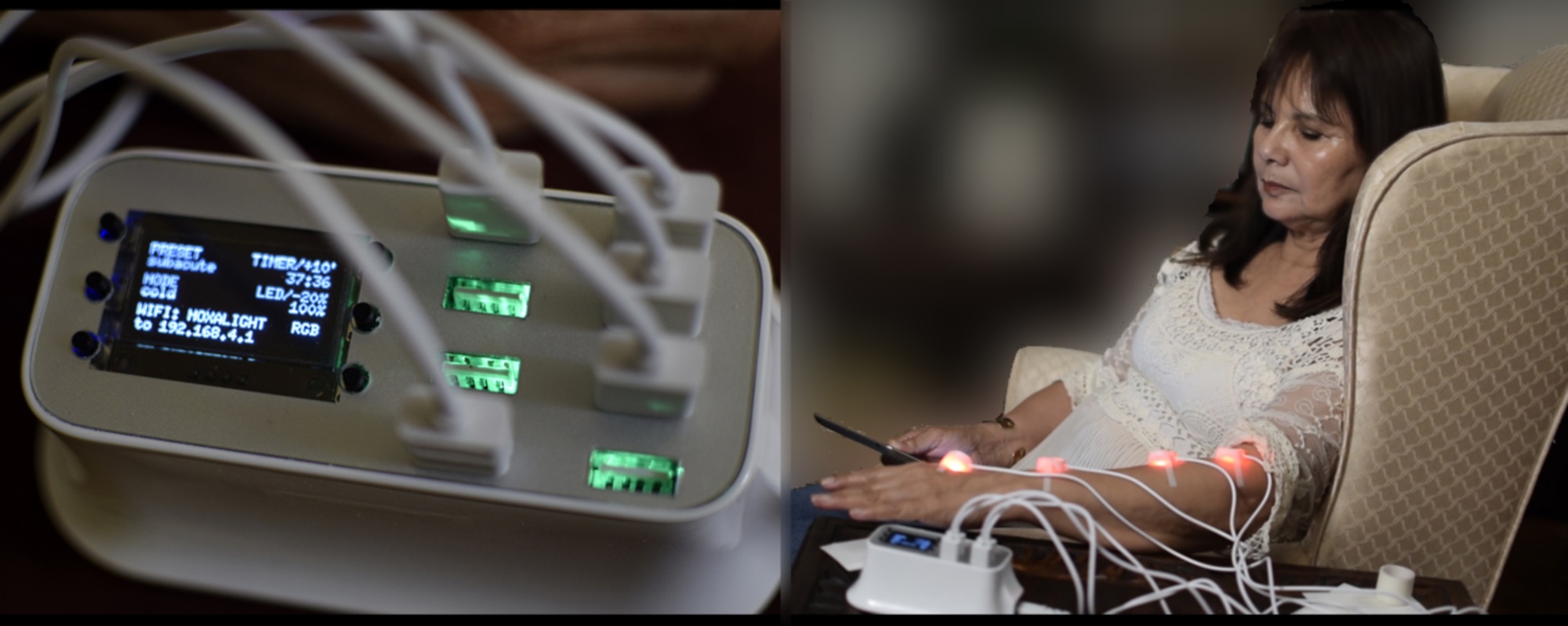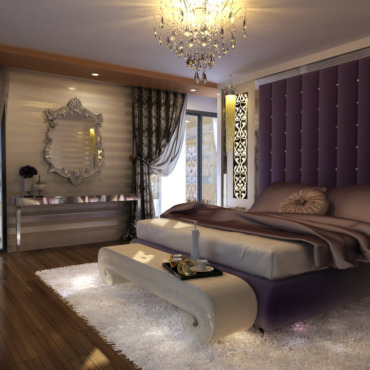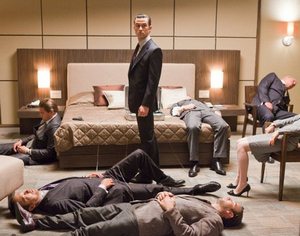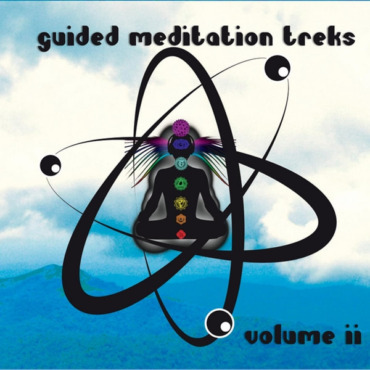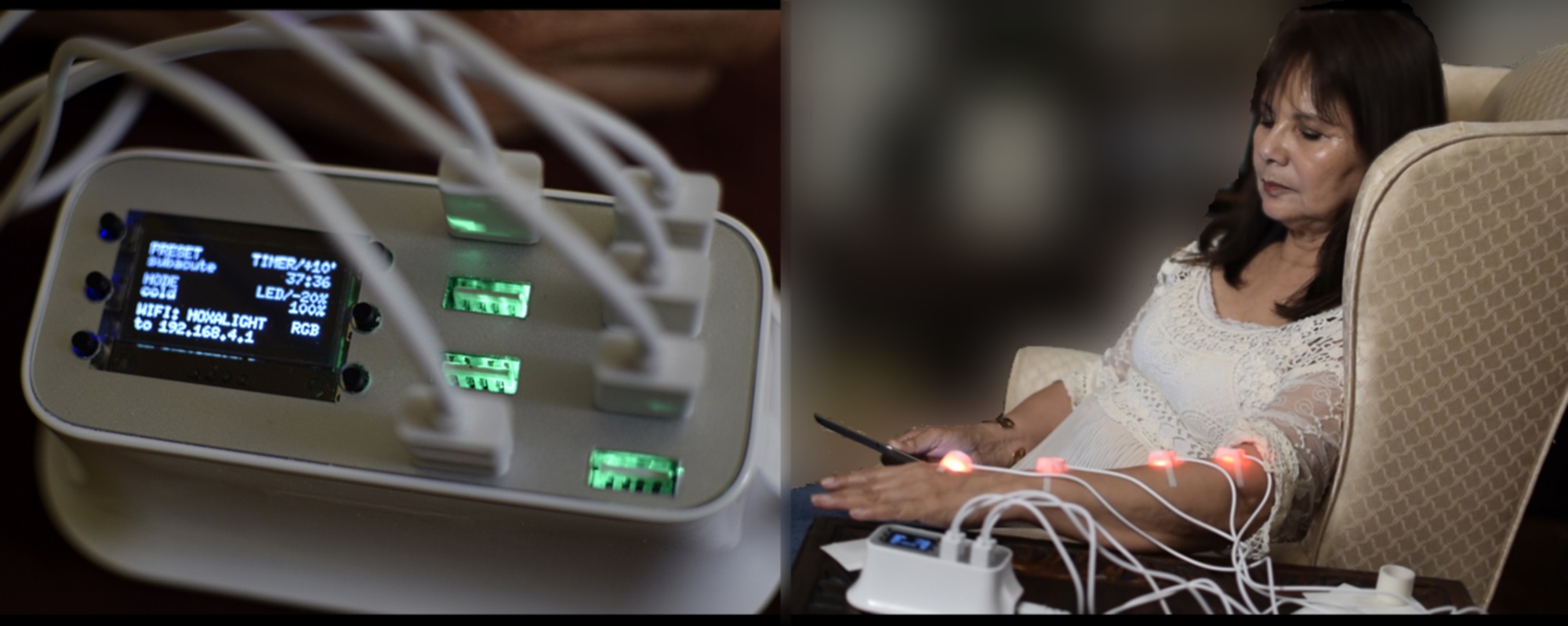
I’ve been an avid consumer of acupuncture for over a decade. As a software developer and pianist, I spend a lot of time at a keyboard using my wrists and arms. This causes tension that runs up my arms, and also around my shoulders and into my neck and back. I believe that regular acupuncture has helped keep me from developing severe tendonitis, or worse, carpal tunnel syndrome. I try to go twice a month, and I’ve advised friends to use it for their own muscular pain and tension. However, some people are against acupuncture because they are either afraid of needles or have a bad history with them. Recently, I was given the opportunity to try the
moxaLight, which applies the concepts of acupuncture via a system of LED lights attached to the body. It seemed promising, not only for those who fear needles, but for myself. Sometimes, I just can’t get enough acupuncture. In the past, I’d stolen needles from my acupuncturists to administer it at home, but I learned that this can be dangerous if I hit the wrong points. The moxaLight seemed like a much safer alternative for home-administered acupuncture, so I was excited to try it. With that, I present my review of this product…
My First Impression

I must admit, I was skeptical at first. I couldn’t imagine how you could take the needles out of acupuncture and still get the effect. Secondly, I’d had experience with the Chinese medicine tool called “moxibustion therapy,” which involved burning dried mugwort on various acupoints of my body. I never liked this therapy because it felt like I was burning. So, the name of the moxaLight made me wonder. Nevertheless, I gave it a shot. I hooked up the nodes to points around my neck, upper body, and arms, then set the timer for the default “chronic” setting for 40 minutes. I lied down and relaxed, as I would at any other acupuncture appointment. The results were pleasantly surprising, and it was indeed similar to acupuncture. I felt my digestion moving, which I always notice at the acupuncturist. It is recommend you eat before an acupuncture session because it stimulates digestion. The moxaLight did the same thing for me. By the end of my first session, I could also feel the muscles around my spine relax to the point where it felt like I could ‘pop my neck’ because it wasn’t so tight. I always notice when I leave acupuncture that I can easily pop my knuckles and joints because the muscles around them have relaxed so much, and it was awesome to feel the same effects from the moxaLight. After only one use, I felt that the moxaLight had promise!
Finding My Points
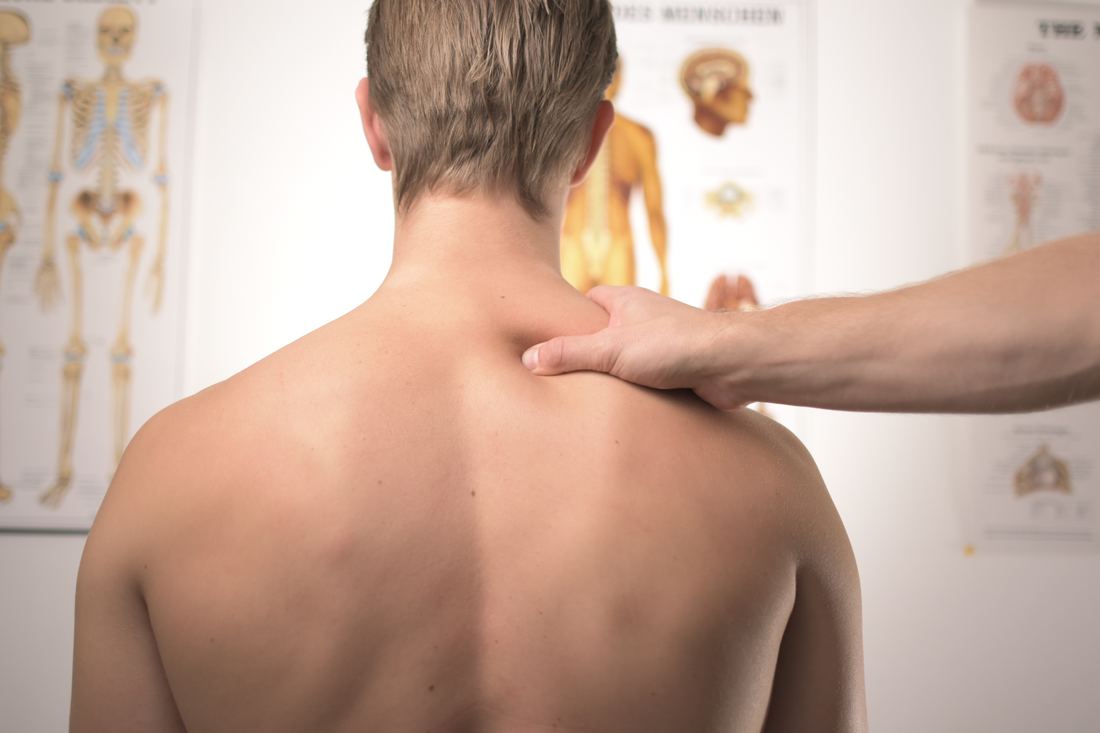
If you don’t have experience with acupuncture, the hardest part can be finding the points. There are many resources on the web for body maps that show you the parts. However, I find that the best way to find the points is the way my acupuncturists always do it:
- Start with the general area of the body that is tense or has pain
- Optionally refer to a map to get “close” to one of the points
- Press down with one finger on the skin in a focused spot near the area, then keep moving around and pressing until you “feel it” the most. Usually, it’s unmistakable when you hit a point, as it is the most sensitive spot in a given area when you press on it.
- Attach the node directly over this point.
Creating The Flow

Once you find the major points you want to work on, I’ve found it helpful to not bunch all the treatment in one small area. When I go to the acupuncturist, they never just put needles in my wrists. They always balance it out by putting some around my neck and even a couple on my ankles. Acupuncture improves Qi (chi) flow, and this is done by spreading the needles out across the body. I’d suggest that the same be done with the moxaLight.
For example, if I have pain in my neck, I put most of the lights there, but try to balance it by putting two nodes either on my lower back or even around my heels or wrists to help the Qi to flow away from the concentrated area where the pain or discomfort is.
Several Sessions Later…

After using the moxaLight for several sessions, I got the hang of how it worked and also the effects, which seemed to include subtle emotional effects. I realized that the moxaLight could be used as a powerful healing tool, and that the best way to do a session was the same way as at the acupuncturist — that is, in a quiet room with no interruptions as you lie flat and motionless for the entire session. Acupuncture forces you to relax and stay completely still because your body is stuffed with needles like a pincushion, and moving can be harmful. Forced relaxation is part of the benefit of acupuncture, and it should be adhered to during a moxaLight session so the lights can do their job on your muscles and make them relax even more deeply. In the end, while I won’t be cancelling my acupuncture subscription any time soon (there’s nothing quite like the effects of 20 needles in my meridians after a day of video editing on a laptop), I would recommend the moxaLight to those with a needle sensitivity, and also as a general healing tool, much like moxabustion and cupping are great supplements in the toolshed for healing.
Customer Support

moxaLight’s website has everything you need to get started, but it’s a little hard to navigate. They have great customer support via email and answered all of my questions quickly. The founder of moxaLight, CJ, developed the system with his acupuncturist after his own fear of needles. moxaLight went through several iterations, including improvement of the LED lights themselves, which have expanded in the latest iteration in terms of covering more of the wavelengths used for this purpose. CJ was helpful in answering questions directly, and even has his own practice where he uses moxaLight to treat his own clients.
My only “room for improvement” comment is around the way the nodes attach to the body. They must be “stuck” to the points with an adhesive to hold them in place. moxaLight comes with these really perfect single-use hypoallergenic double-sided stickers that make attaching the nodes easy. However, the system only comes with enough for two sessions, and replacement stickers cost about $3 for a sessions’ worth. The backup is to use medical tape or band-aids to put over the nodes and attach to the skin, but this is less ideal. CJ told me they are trying to find a cheaper supplier of the double-stick pads, so stay tuned.
Custom Programs and Brainwave Entrainment
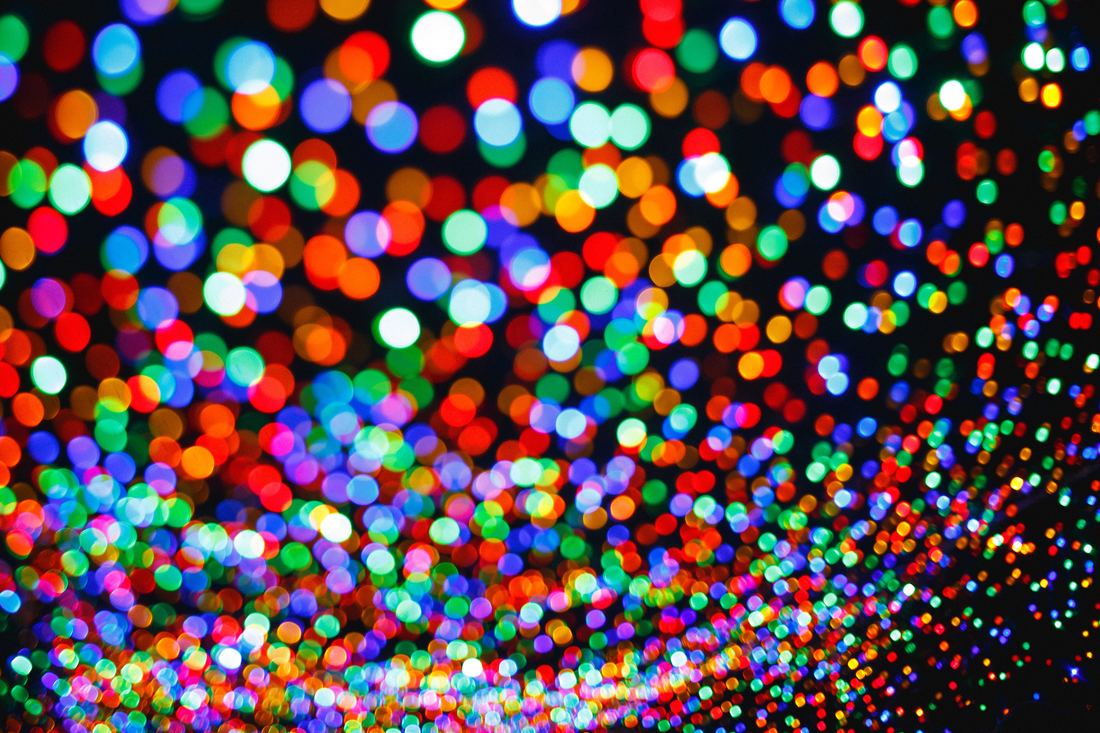
I focused on this tool as a substitute and supplement for acupuncture, but once I started
reading the manual, I realized that the moxaLight is wifi capable, and includes an interface where you can program it! In fact, the company is working on a product which attaches to the head with the intention to synchronize your brainwaves, much in the same way that Guided Meditation Treks uses brainwave entrainment though sound. I got excited about the possibility of synchronizing the tool with some of my work, and may look into working with them in the future on some research into combining light and sound therapy with these tools. The moxaLight, at is root, is simply an 8-node full-spectrum and fully-programmable LED light machine, so the possibilities go beyond acupuncture without needles. However, even without these new frontiers, I found the moxaLight to be a useful tool in the management of pain and inflammation in a similar way that acupuncture is, and the great part is that you can buy the
moxaLight for the price of just a few acupuncture sessions, then you can do it in the comfort of your own home as often as you like for as many uses as you want.


